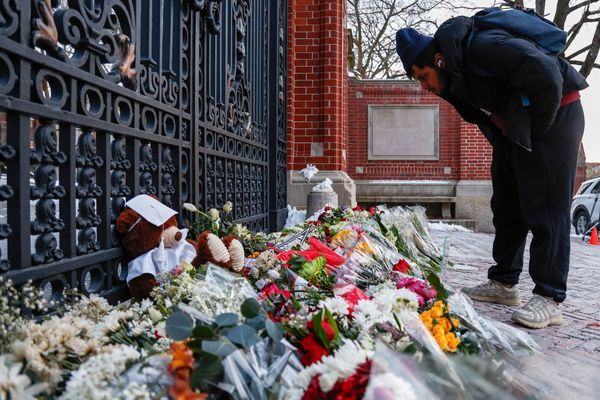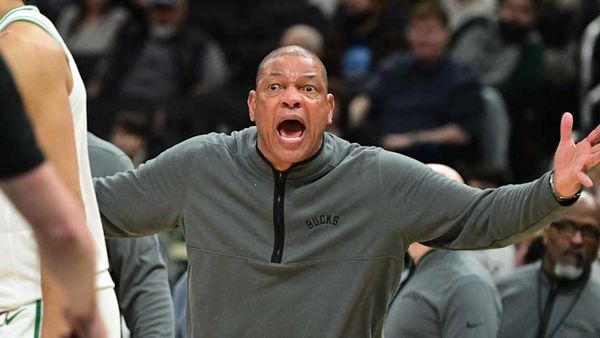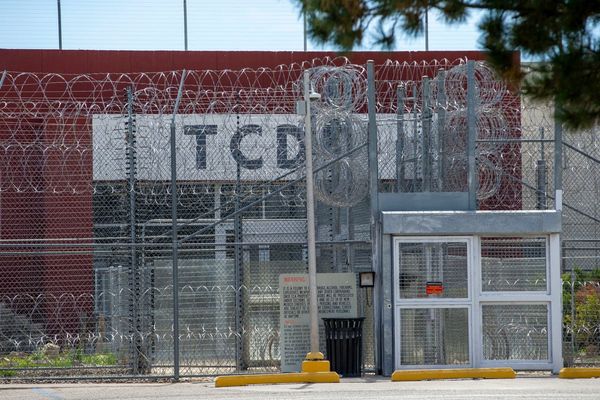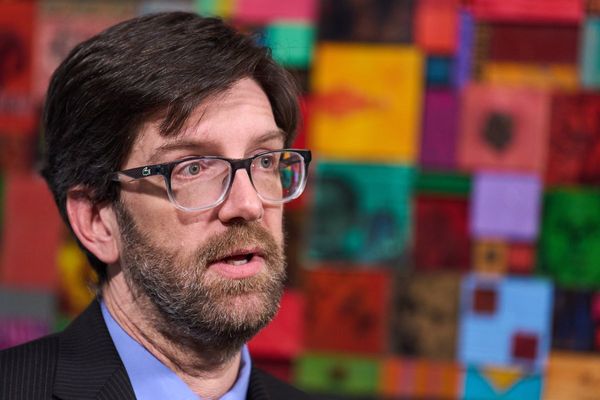
Several journalists covering the protests in Los Angeles against the Trump administration’s immigration crackdown have reported being attacked by law enforcement over the last several days, prompting condemnation and a call on authorities to do “more to ensure press freedom is respected”.
Some were struck by rubber bullets and fired at with pepper balls while one crew was briefly detained while broadcasting live.
CNN’s Jason Carroll and his crew were briefly detained by police on Monday while covering the LA protests live on air. A video of the encounter shows Los Angeles police officers telling Carroll and his colleagues that they have to leave the area, before asking them to put their hands behind their backs and escorting them away.
“I asked, ‘Am I being arrested?’” Carroll told CNN after the incident, to which he said the officer told him: “No … you’re being detained.”
In the video, the officer says that if they return to the area they would be arrested.
Carroll later said he tried to explain to the officer who he was, identifying himself as press, and that they “did not put me in zip-ties, but they did grab both of my hands as I was escorted over to the side”.
“You take a lot of risks as press, this is low on that sort of scale of risks, but it is something that I wasn’t expecting, simply because we’ve been out here all day, [and] I’ve covered any number of protests,” Carroll said.
A CNN spokesperson confirmed to USA Today that the crew was briefly detained while “capturing the events that were unfolding as police attempted to clear an area during the protests and police and military response in the city”.
“We are pleased the situation resolved quickly once the reporting team presented law enforcement with their CNN credentials. CNN will continue to report out the news unfolding in Los Angeles,” the spokesperson added.
On Sunday, the Australian journalist Lauren Tomasi from Nine News was shot in the leg by a rubber bullet while reporting live from the protests.
In a statement, Nine News said Tomasi was “struck by a rubber bullet” and said that she and her camera operator “are safe and will continue their essential work covering these events”.
“This incident serves as a stark reminder of the inherent dangers journalists can face while reporting from the frontlines of protests, underscoring the importance of their role in providing vital information,” the network added.
“Less-than-lethal” or “less lethal” munitions – such as rubber, plastic, or sponge bullets, and pepper balls – are sometimes deployed in the US during protests to disperse crowds. Despite the term, these munitions have caused serious injury and death in the past.
Amid the Los Angeles protests, CNN has documented the deployment of flash-bangs, teargas, pepper balls, rubber bullets and bean-bag rounds.
The investigative reporter Sergio Olmos from CalMatters told the Washington Post he was hit on Sunday by what he believes was a 40mm sponge grenade.
Olmos, who said he has covered hundreds of protests, described the use of less-lethal rounds on Sunday as the “most” he had seen “used in a single-day protest”.
The Los Angeles police department did not immediately respond to requests for comment from the Guardian. But in a news release, the department said the “LAPD professional standards bureau will be investigating allegations of excessive force and other issues related to LAPD actions during the protests”.
As of Tuesday evening, in addition to Ice and the LAPD, various law enforcement agencies including the sheriff’s department, the Department of Homeland Security and California highway patrol are all currently operating across LA amid the demonstrations.
The British photographer Nick Stern, who is based in LA, told the Guardian he was wounded on Saturday by what appeared to be a less-lethal projectile fired at him while covering the protest, and said that the injury required surgery.
Stern was taken to the hospital, and as of Sunday, was awaiting surgery. He said the doctor who looked at his X-rays said his wound indicated he had been struck by a non-lethal round.
A New York Times reporter was also hit by a non-lethal round in downtown Los Angeles on Sunday, the newspaper said. The reporter was assessed at a hospital but not seriously injured.
On Sunday, a freelance photographer for the New York Post was hit in the head by a less-lethal round while covering the protests on California’s 101 freeway. The photographer, who says he was wearing his press pass, said a California highway patrol officer fired at him from about 100 yards away.
A photo published by the Post shows a large bruise on his forehead. The newspaper said that he was treated for whiplash and neck pain.
The California highway patrol did not immediately respond to a request for comment.
On Monday, the Committee to Protect Journalists (CPJ) condemned the incidents.
“We are greatly concerned by the reports of law enforcement officers’ shooting non-lethal rounds at reporters covering protests in Los Angeles” said Katherine Jacobsen, the CPJ US, Canada and Caribbean program coordinator.
“Any attempt to discourage or silence media coverage by intimidating or injuring journalists should not be tolerated. It is incumbent upon authorities to respect the media’s role of documenting issues of public interest.”
Reporters Without Borders, another press freedom group, said that at least 27 “separate incidents of violence against journalists have been recorded at the protests since 6 June”, including “24 by law enforcement and three by individuals”.
Clayton Weimers, executive director of Reporters Without Borders US, called the incidents “unacceptable” and called on authorities in LA to do “more to ensure press freedom is respected during these protests”.
“These protests are a matter of huge public interest and the public has a right to know exactly what’s going on,” Weimers said. “The only way that can happen is if journalists are allowed to do their jobs freely.”







